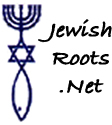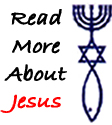







Before we dive directly into the text of Psalm 110, there are a number of introductory matters that should be developed. The first item centers on the four types of Messianic prophecies found in the Bible.
The first type stresses the Messiah's First Coming only. These prophecies only deal with events and actions that the Messiah will perform during His First Coming in humility as the Suffering Servant and the Lamb of God.
The second type of Messianic prophecy stresses His Second Coming only. In other words, only events and actions related to His appearance as the King of Kings and Lord of Lords are revealed in Second Coming prophecies.
The third type of prophecy could be called a blend prophecy. This type is an intermingling of the First and Second Comings. In other words, events and actions from both the first and Second Comings are combined together into one picture. Often there is no clear line of distinction drawn between the two time intervals. They appear to be one complete scene. This phenomenon occurs because God is unlimited in regard to time. Time is, in fact, one complete scene from His point of view. He is all-present in regard to space and time. For God, time is always in the present tense. When a prophet is viewing a prophetic scene, he views the scene from God's perspective, unlimited by space or time.
The prophet can swing his gaze along the time line and see the relationship between events that are separated by minute as well as vast intervals. He then relays that information to us who are imprisoned in the normal space/time continuum. The result troubles us because we cannot always see a clear break between the events of the First Coming and the events of the Second Coming-events separated by at least 2,000 years. Fortunately, we have the New Testament to aid us and reveal the time breaks. The Old Testament saints did not have this advantage that we enjoy today.
The last kind of Messianic prophecy is known as a complete career prophecy. A complete career psalm, such as Psalm 110, covers all the events of the Messiah's career. A complete career prophecy covers three aspects: the First Coming, the interval between the First and Second Coming and the Second Coming. Psalm 110 clearly represents this type of prophecy. These three aspects of the Messiah's career are clearly seen in verse one:
Sit at My right hand-1a. This phrase summarizes the events of the First Coming and the ascension.
Until-1b. This word summarizes the current interval of 2,000 years that has elapsed between the First and Second coming.
I make Your enemies a footstool for Your feet -1c. The final phrase of verse one summarizes the events of Yeshua's Second Coming when He returns as King of Kings to save Israel, defeat His enemies, judge the world and institute the Messianic Kingdom.
The next introductory issue that needs to be explained is the controversy surrounding the superscription of Psalm 110. When read in the normal, natural meaning of the Hebrew, the superscription to Psalm 110 reads "A Psalm of David" and indicates Davidic authorship. This is important because not everyone accepts this statement at face value. Some say God alone is the author; others say David's devoted soldiers wrote the psalm.
In Jewish thinking the normal, natural meaning is the most important. In the Jewish community, there are four basic methods of interpretation used to understand the scriptures. According to the Encyclopedia Judaica, they are:
1. The Homiletical or Midrashic-D'rash: This method consists of selecting from the teaching of the rabbi's lessons of an edifying or practical nature which the text suggests. D'rash deals with day to day practical application of scripture.
2. The Philosophical or Rationalistic-Remez: This method consists of deriving from scripture the allegorical meaning of the text. An allegory is a symbolic explanation. The rabbis tend to see extensive symbols in the Bible. However, most of their symbolic interpretations cannot be substantiated by the text. The vast majority of rabbinic Remez is simply clever, intellectual, imaginative speculation.
3. The third interpretive method is the Mystical or Allegorical-Sod: This method consists of finding hints or allusions in the Bible on the nature of God and the soul, etc.(1)
4. The Literary or Literal-P'shat: This final method consists of applying to the text of the Bible the normal standards of diction, style, and arrangement in order to understand the plain meaning. P'shat deals with the explanation of the plain meaning of the text.
Of the four, this is the interpretive method the rabbis prefer. In the Talmud, in Shabbat 63A, this statement is found: A verse cannot depart from its plain meaning.(2)
The importance of this statement is revealed by Rabbi Aharon Feldman in his book The Juggler and the King. Rabbi Feldman describes the comment, "a verse cannot depart from its plain meaning" as the "Sage's dictum." A dictum is an authoritative declaration.(3) He goes on to say that it is an authoritative declaration of the rabbinic sages that"the simple meaning of the text is always true.(4)So, the rabbinic sages understood that this interpretive method was to be preferred.
The writers of the New Testament quote the Hebrew Scriptures using the cultural mindset of the day in which they lived. The result is the fact that they used this four-fold approach rather than any single or rigid method. In fact, Matthew uses all four methods, one after the other, in Chapter 2 of his book. This reflects his First Century Jewish mindset and culture.
In Matthew 2:5-6, he views Micah 5:2 as a literal fulfillment, a P'shat. In Matthew 2:15, he views Hosea 11:1 philosophically or typically. In other words, he uses Remez. In Matthew 2:17-18, he views Jeremiah 31:15 homiletically, a D'rash. Matthew 2:17-18 is a practical application of Jeremiah 31:15. Finally, in Matthew 2:23, he makes a summary statement covering all that the prophets (note: plural) as a group taught about the Messiah. In Matthew 2:23, he is approaching the text from a mystical point of view. He is using the technique called Sod.
All quotes of the Hebrew Scriptures in the New Testament will always fit into one of these four categories. The New Testament, because it is a Jewish book and written by Jewish authors, is very consistent in the way it uses the Hebrew Scriptures. The previous paragraphs can be summarized in the following chart.
RABBINIC TERM |
USAGE |
VERSE QUOTED |
EXAMPLE |
P'shat (Plain Sense, Literal) |
Literal Prophecy plus Literal Fulfillment |
Micah 5:2 (Birth of Messiah) |
Matthew 2:5-6 Prophet (singular) |
Remez (Allegory and Homiletical |
Literal Prophecy plus Typical Fulfillment |
Hosea 11:1 (The Exodus) |
Matthew 2:15 Prophet (singular) |
D'rash (Aggadic or Homiletical) |
Literal Prophecy plus Application |
Jeremiah 31:15 (Babylonian Captivity) |
Matthew 2:17-18 Prophet
(singular) |
Sod (Mystical) (6) |
Summation |
None (Summary of all that the Tenach taught about the Messiah |
Matthew 2:23 Prophets
(plural) |
With all this being said it is important to note that Psalm 110 is a literal prophecy with a literal fulfillment. Psalm 110 is an example of P'shat. Consistent with the literal nature of the psalm, the Lord Yeshua Himself accepted the superscription of Psalm 110 as it is. Yeshua interpreted the superscription in its plain, ordinary, literal sense (P'shat). Yeshua quoted Psalm 110:1 in Matthew 22:41-46 and spoke of David in reference to the psalm. Matthew 22:41-46 says:
Now while the Pharisees were gathered together, Jesus asked them a question: 'What do you think about the Christ, whose son is He?' They said to Him, 'The son of David.' He said to them, 'Then how does David in the Spirit call Him "Lord," saying, "THE LORD SAID TO MY LORD, 'SIT AT MY RIGHT HAND, UNTIL I PUT YOUR ENEMIES BENEATH YOUR FEET'"? "If David then calls Him "Lord," how is He his son?' No one was able to answer Him a word, nor did anyone dare from that day on to ask Him another question.
In regard to Psalm 110, Yeshua states three things:
1. David was the Holy Spirit inspired author of this psalm. Yeshua affirmed that David wrote the psalm "in the Spirit" in Matthew 22:42. Everybody agreed that the human writer of Psalm 110 was David, and the hidden writer was God Himself. Psalm 110 is the result of God and David's cooperative effort. Now, the hidden author, God Himself in the form of Jesus the Messiah, will tell us exactly what He meant when He inspired David to pen these words.
2. In Matthew 22:42, everybody agreed that the psalm refers to the Messiah.
3. In verse 44 of Matthew 22, this psalm reveals that the Messiah has authority over King David. However, there is opposition to this view. Not everybody agreed with this statement. Normally the man who established a dynasty has authority over his descendants. Here, David - as the human progenitor of the Davidic Dynasty - is acknowledging the superior office of a descendant. This is unexpected and needs an explanation. The explanation is the fact that the descendant of David is the Messiah. Since Yeshua was claiming to be the Messiah, He was stating to the Pharisees that He claimed Lordship and authority over King David, and consequently, over them. The Pharisees were unable to respond to His statements. They were unable to provide an explanation to Yeshua's questions. They did not know why the Messiah would be superior to David. They were unable to argue with him anymore
Therefore, on the authority of Yeshua's interpretation itself, Psalm 110 was written by David about the Messiah and describes his character as well as His future activities.
With these introductory matters as our foundation, let us look at the text of Psalm 110. As we read this psalm, it is apparent that King David has the privilege of seeing far into the future and observing a heavenly scene. As he watched that scene, he was allowed to speak forth and write down three revelations about the Messiah who was to come. Reading Psalm 110 will also allow us to look into heavenly things and catch a glimpse of this person we call the Lord of our lives.
Next part of Psalm 110 study is Part 1 - Messiah Is King
Psalm 110 Links:
Articles related to the Messiah in the Psalms include:
1. Encyclopedia Judaica, "Literature, Jewish", CD Rom Edition, Version 1.0, s.v.
2. The Soncino Talmud (Soncino Press, Ltd. ©1965, 1967, 1977, 1983, 1984, 1987, 1988, & 1990)
3. WordNet ® 2.0, © 2003 Princeton University
4. Feldman, Rabbi Aharon, The Juggler and the King (Spring Valley: Philipp Feldheim, Inc., 1990), p. xxii
5. For further development see: Cooper, Dr. David L., Messiah: His Historical Appearance (Los Angeles, Biblical Research Society, 1958), pp. 174-178, Fruchtenbaum, A.G., "Radio Manuscript 134" (Tustin, CA: Ariel Ministries, 1991)
6. Encyclopedia Judaica, "Pardes," CD ROM Edition, (Jerusalem, Israel: Keter Publishing House Jerusalem Ltd., 1972
This article originated at HaDavar Messianic
Ministries,
an Outreach of Irvine Community Church.
14804 Sand Canyon Ave Irvine, CA 92618-1726
Phone: 949-559-1701
Email: hadavar@hadavar.org
Reposted with permission.